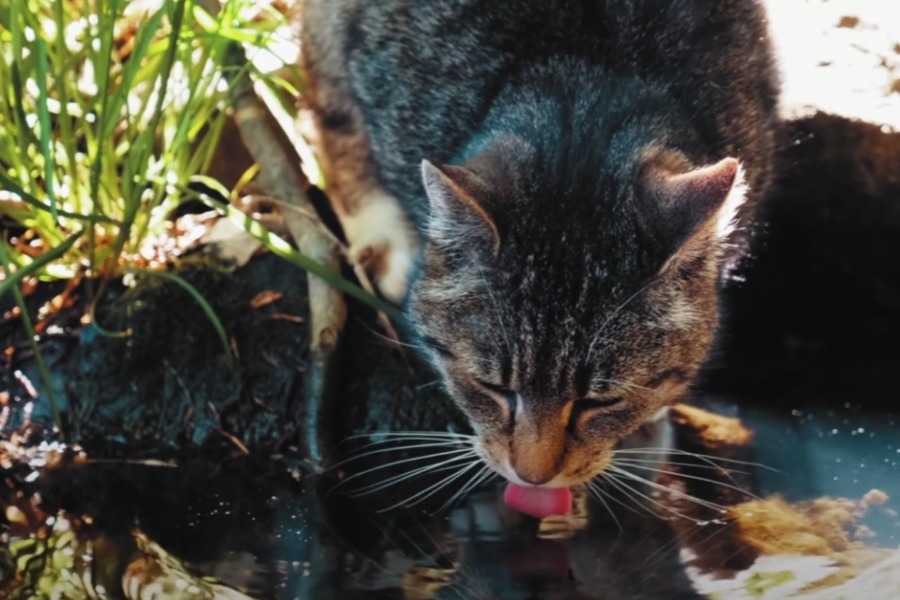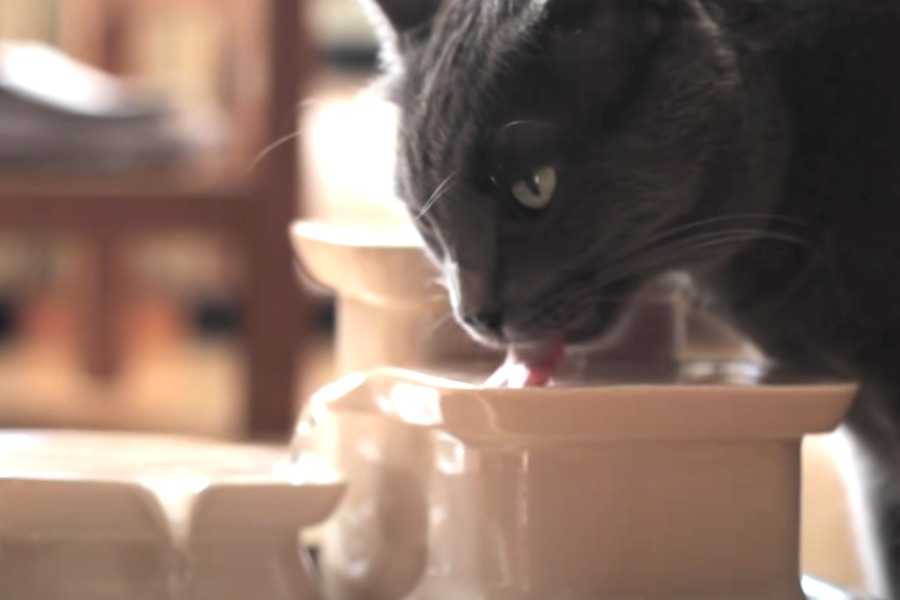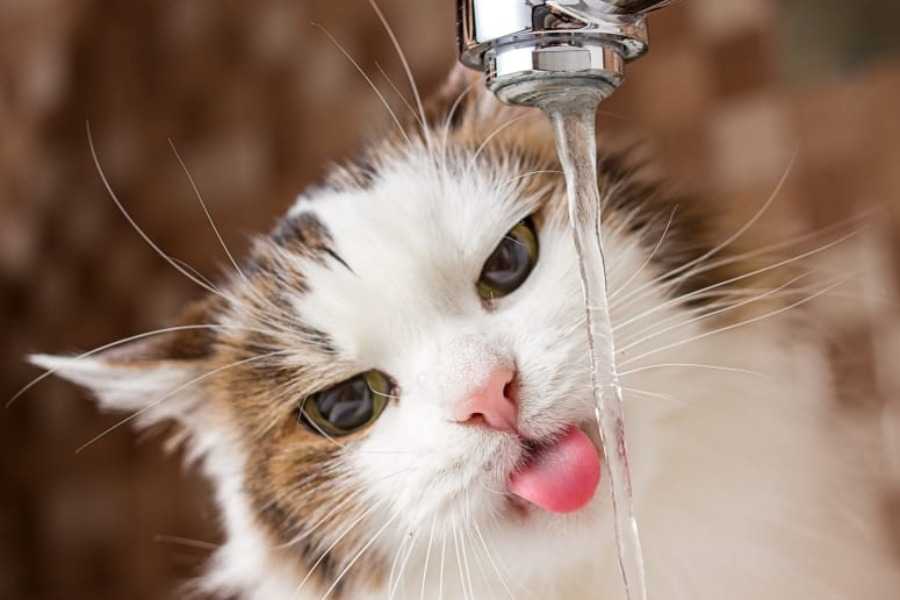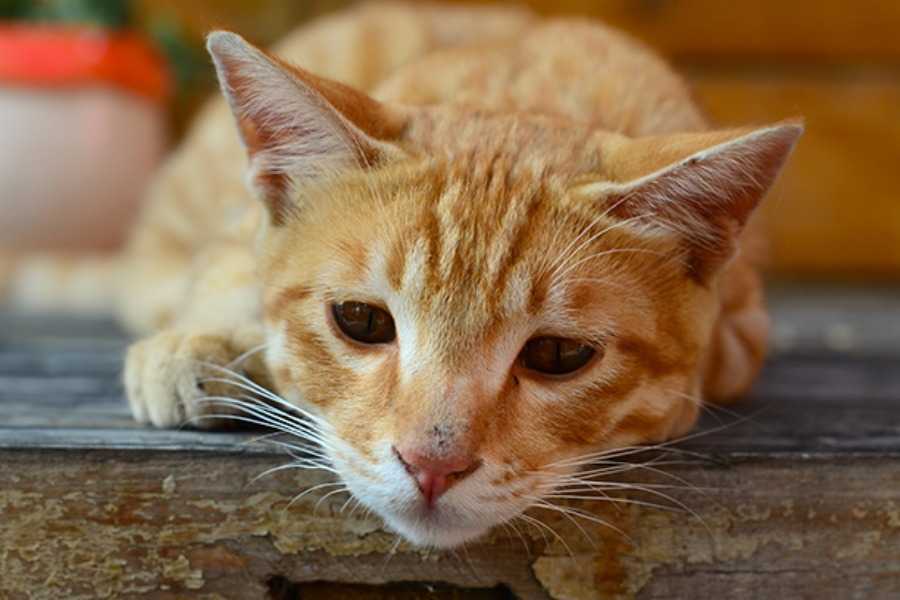Why Cat won't Drink Water? How Much Water Should My Cat Drink?

Why Cat won’t Drink Water? If you are a pet parents, you may have this question.
Today, we’re diving into an essential aspect of your cat’s health: hydration. Understanding your cat’s water needs is crucial for their overall well-being.
In this post, we’ll explore how much water your cat should drink, why they might stop drinking, and provide tips to encourage them to hydrate more.
Why Might a Cat Stop Drinking Water?

There are many reasons why a cat might stop drinking water. Some of the most common include a lack of hygiene, behavioral changes due to alterations in their routine, or the onset of certain health conditions such as feline lower urinary tract disease.
This disease is a general term for various problems with the urinary tract and is fairly common in domestic cats.
Interestingly, the taste of the water can also affect your cat’s drinking habits. Some cats may be put off by the taste of tap water or the plastic taste that water can acquire in low-quality containers. Stainless steel or glass dishes are recommended to avoid this issue.
How Much Water Should a Cat Drink?

Water intake in cats can vary based on several factors, including their size, diet, age, and even the time of year.
Cats that consume only dry food may require more water than those that eat wet food regularly. Kittens and elderly cats will need more water than others, and all cats may need to drink more when the weather gets warmer.
In general, a healthy cat of around 5 kilograms or 11 pounds should consume around 250 ml of water per day under normal conditions. However, if your cat is not drinking enough water, it’s essential to look out for other symptoms of dehydration.
These can include a lack of skin elasticity, a dulled coat, flakes of dead skin in their fur, a lack of urination, and apathy. If you notice these symptoms, it’s time to consult with a veterinarian.
10 Tips to Encourage Your Cat to Drink More Water

If your cat is not drinking enough water, here are some tips to encourage them to hydrate more:
Maintain hygiene: Ensure your cat’s water bowl is clean. Replace their water at least once a day and clean their bowl at least once a week.
Separate water from food and litter: Cats prefer their water to be properly separated from their litter tray and food. Place their fresh water somewhere accessible and clean.
Try different water sources: If your cat doesn’t like tap water, you might need to provide better quality water. Some cats may prefer filtered or bottled water.
Enrich their food: While some cats may not like their food to be soaked in water, others may benefit if their food is enriched with a flavorful stock. Just ensure the stock doesn’t contain anything harmful to the cat, such as onions or salt.
Distribute several water containers: Placing several water containers around the home can help increase your cat’s water intake and appeal to their curious nature.
Install a water fountain: Cats love fresh water streams, so installing a water fountain might help encourage them to drink more. They are ideal for cats that stay indoors or suffer from high stress levels.
Offer wet food: Wet food contains a high proportion of water, around 80%. Offering your cat wet food can provide extra hydration and help stimulate their appetite.
Play near the tap: Playing near the tap or faucet can awaken your cat’s curiosity and encourage them to drink running water. This can both hydrate the cat and strengthen your bond.
Monitor water intake: Keep an eye on your cat’s water intake. If it has drastically increased and does not improve with these helpful tips, it’s advisable to consult with your trusted veterinarian to ensure there are no underlying health problems.
Make sure the water is fresh: Cats love fresh water, so don’t forget to replace their water at least once a day. This will be essential to keep them hydrated and healthy.
The Importance of Hydration for Cats

Hydration is vital for all living beings, and cats are no exception. Water plays a crucial role in various bodily functions, including digestion, nutrient absorption, circulation, and waste removal. It also helps regulate body temperature and maintain healthy skin and coat.
Dehydration in cats can lead to serious health issues, including urinary tract problems, kidney disease, and even life-threatening conditions. Therefore, ensuring your cat stays well-hydrated is an essential part of their overall health and well-being.
Common Misconceptions About Cat Hydration

There are several misconceptions about cat hydration that can lead to misunderstandings and potentially harmful situations. Here are a few common ones:
Cats get all the water they need from their food: While wet food does contain a significant amount of water, it may not provide all the hydration your cat needs, especially if they are active or it’s a hot day.
Cats don’t need to drink water if they drink milk: Contrary to popular belief, most adult cats are lactose intolerant and can’t properly digest milk. This can lead to digestive issues and dehydration. For more information, check out our post on why cats can’t drink milk.
Cats don’t need as much water as dogs: While it’s true that cats generally need less water than dogs due to their smaller size and different physiology, they still need a sufficient amount of water to stay healthy.
Conclusion

Understanding your cat’s water needs is crucial for their overall health and well-being. If your cat is not drinking enough water, it’s essential to take steps to encourage them to hydrate more.
Remember, if you notice any signs of dehydration or other worrying symptoms, it’s always best to consult with a veterinarian.
At PawsAdviser, we’re committed to providing you with the information you need to make the best decisions for your pet. If you found this post helpful, check out our other articles on cat health and behavior. We’re here to help you and your pet live a happy, healthy life together.
Tags
Share
Table Of Contents
Related Posts
Quick Links

